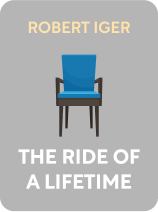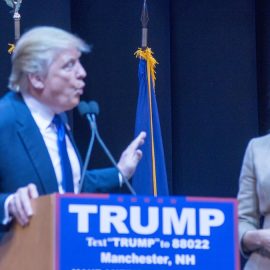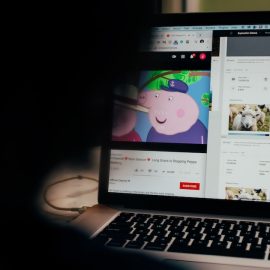

This article is an excerpt from the Shortform book guide to "The Ride of a Lifetime" by Bob Iger. Shortform has the world's best summaries and analyses of books you should be reading.
Like this article? Sign up for a free trial here .
Why were Bob Iger’s first hundred days as Disney’s CEO so important? What big changes did he make to the way Disney is run?
Although Bob Iger’s first hundred days as Disney’s CEO overlapped Michael Eisner’s final 6 months, all eyes were on Iger. Iger chose to take advantage of his position to repair relationships Eisner had destroyed and to fundamentally change how Disney would be run.
Keep reading to learn more about Bob Iger’s first hundred days as Disney’s CEO.
Iger’s First Hundred Days as Disney CEO
New CEOs and politicians are watched closely during their “first hundred days” as an early indicator of their tenure. Since Michael Eisner still had 6 months on the job before Iger was on his own, he thought he had some buffer time to plan his moves carefully.
This wasn’t the case. Upon the announcement that Iger would become the CEO of Disney, the press, the public, and Disney employees started scrutinizing his actions. Many still believed that Disney had made a mistake, or that Iger was only a temporary solution until they found a real CEO from the outside.
Iger decided that his first hundred days would essentially start now, and he needed to establish the tone of his leadership. He focused on three key actions:
- Repair the relationship with Roy Disney: Fighting publicly with a Disney family member was a bad look.
- Repair the relationship with Pixar and Steve Jobs: Pixar was a key creative partner, and Steve was a messiah of technology. Partnering with both would be good for Disney.
- Change Disney’s reliance on Strat Planning for business decisions.
Repairing the Relationship With Roy Disney
As soon as Iger was appointed CEO, Roy Disney and Stanley Gold sued the board for running a fraudulent CEO selection process. They claimed that Iger had always been preordained to be CEO, and the board had done a perfunctory job.
Iger, already wearied from the selection process, was insulted by this move, since it questioned his legitimacy as CEO. But he didn’t want to escalate tensions by fighting the lawsuit and perpetuating Michael Eisner’s long grievances with Roy Disney. Instead, Iger wanted to use his first hundred days to set Disney on a new direction, free of enmity.
Iger first called Stanley Gold asking to meet, thinking he’d be calmer and open the door to Roy. Addressing the lawsuit, Iger explained the torturous interview process he’d gone through and that his appointment was legitimate. Iger then asked what could be done about Roy and the lawsuit. Gold suggested that much of the remaining friction stemmed from Roy’s feeling of being disrespected for being kicked off the board over an age technicality. Roy felt he had lost his home at Disney, and the board hadn’t listened to him when he started sounding alarms about Eisner years earlier. Gold issued a proposal: If Iger could get Roy back into Disney somehow, then they could drop the lawsuit.
Iger asked Gold to meet with Roy, and he soon had his wish granted. In their meeting, Roy wasn’t friendly and expressed that he’d continue fighting the company if it was headed in a wrong direction. But Iger also saw a new vulnerability in Roy. It was clear Roy never felt like he got the credit he deserved for his contributions to the company, and being kicked off the board was the final straw.
Iger wanted to get Roy back into the company so he’d feel at home again, but he didn’t want to open up new opportunities for Roy to continue undermining the company. So Iger proposed an arrangement: Roy would be an emeritus board member, would be invited to company events like film premieres and park openings, and would get an office in Disney. In return, they would drop the lawsuit, not proclaim victory, and not air their grievances publicly.
Gold and Roy Disney agreed, and virtually instantly, years of tension dissolved. All Roy wanted was respect; Eisner ignored this, but Iger embraced it within his first hundred days as CEO.
Repairing the Relationship With Steve Jobs
Iger took a similar approach with Steve Jobs. Eisner and Jobs had clashed for years about Pixar and technology in general. Eisner criticized technology companies for disrespecting the rights of content creators, and he fought for Disney’s share of Pixar’s creative output. In return, Steve Jobs thought Disney was a creative vacuum and had become conservative and stodgy. The tension kept escalating between the two strong personalities.
Iger took a different tack. He called Jobs with an idea—Iger loved using the iPod and it stored all his music. What if you could access all your TV shows and movies on your iPod too? Just as iTunes let you access the entire corpus of music, it could also let you access the entire corpus of entertainment media. Jobs was quiet for a moment, then said he was working on something he wanted to show Iger.
A few weeks later, Jobs flew down to meet Iger. He showed Iger a secret project—an iPod that could play videos. Apple had been imagining the very same thing Iger had described. Now Jobs had a proposal—could Disney put its TV shows on iTunes?
Ordinarily, this would be a major strategic decision requiring deep analysis. Disney could undermine itself by putting its content on a technology platform it didn’t control. Under Eisner, these decisions would take eons, and that irritated Steve Jobs.
Now, guided by his instinct, Iger said yes without checking with anyone else at Disney. This was refreshing to Jobs—for once, here was a Disney CEO who admired Apple, who could see the future, and who could make bold decisions quickly. Months later, Apple launched the video iPad, and Iger joined Jobs on the stage to announce that five Disney shows, including hits like Grey’s Anatomy and Desperate Housewives, would be available on iTunes.
Changing Strategic Planning
Iger’s final move was to change Disney’s reliance on the central Strategic Planning.
When Iger first joined the company, Strategic Planning was created by Eisner to analyze and approve all major business decisions. This worked well for a time, but eventually it dragged down the company in three key ways:
- It slowed decision making across the company. This would spell doom in the modern, technology-driven, fast-shifting era.
- It killed morale with business leaders, who felt impotent given that key decisions were not really theirs to make.
- Knowing their superior position, the people in Strategic Planning were arrogant, believing they were smarter and more aggressive than the rest of the company. In turn, they showed contempt for the rest of Disney, which further destroyed morale.
Iger wanted Disney to be more nimble, to respond to new opportunities quickly. The only way this could be done was through decentralization—business leaders should have the power to make key business decisions themselves.
Within weeks of joining, Iger announced that Strat Planning would be reduced from 65 to 15 people. They would no longer have central decision authority; instead, they’d focus on acquisitions to further Disney’s three priorities.
The effect on morale was instantaneous. Suddenly, business leaders felt they had a license to be creative and risk-taking again.

———End of Preview———
Like what you just read? Read the rest of the world's best book summary and analysis of Bob Iger's "The Ride of a Lifetime" at Shortform .
Here's what you'll find in our full The Ride of a Lifetime summary :
- How Bob Iger went from television crew member to CEO of Disney
- The 10 major principles behind Iger's management style and success
- How Iger resuscitated Disney Animation by buying Pixar






